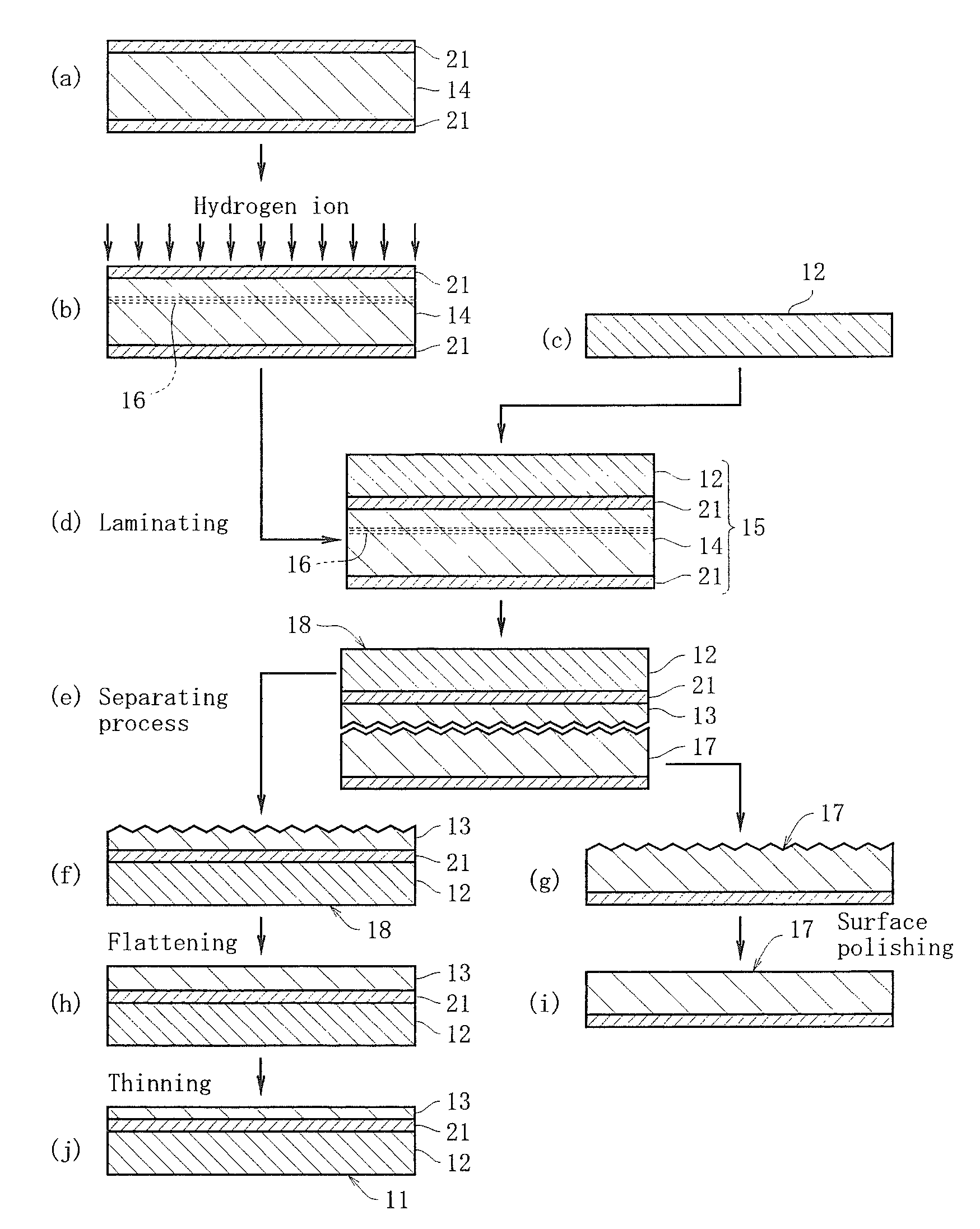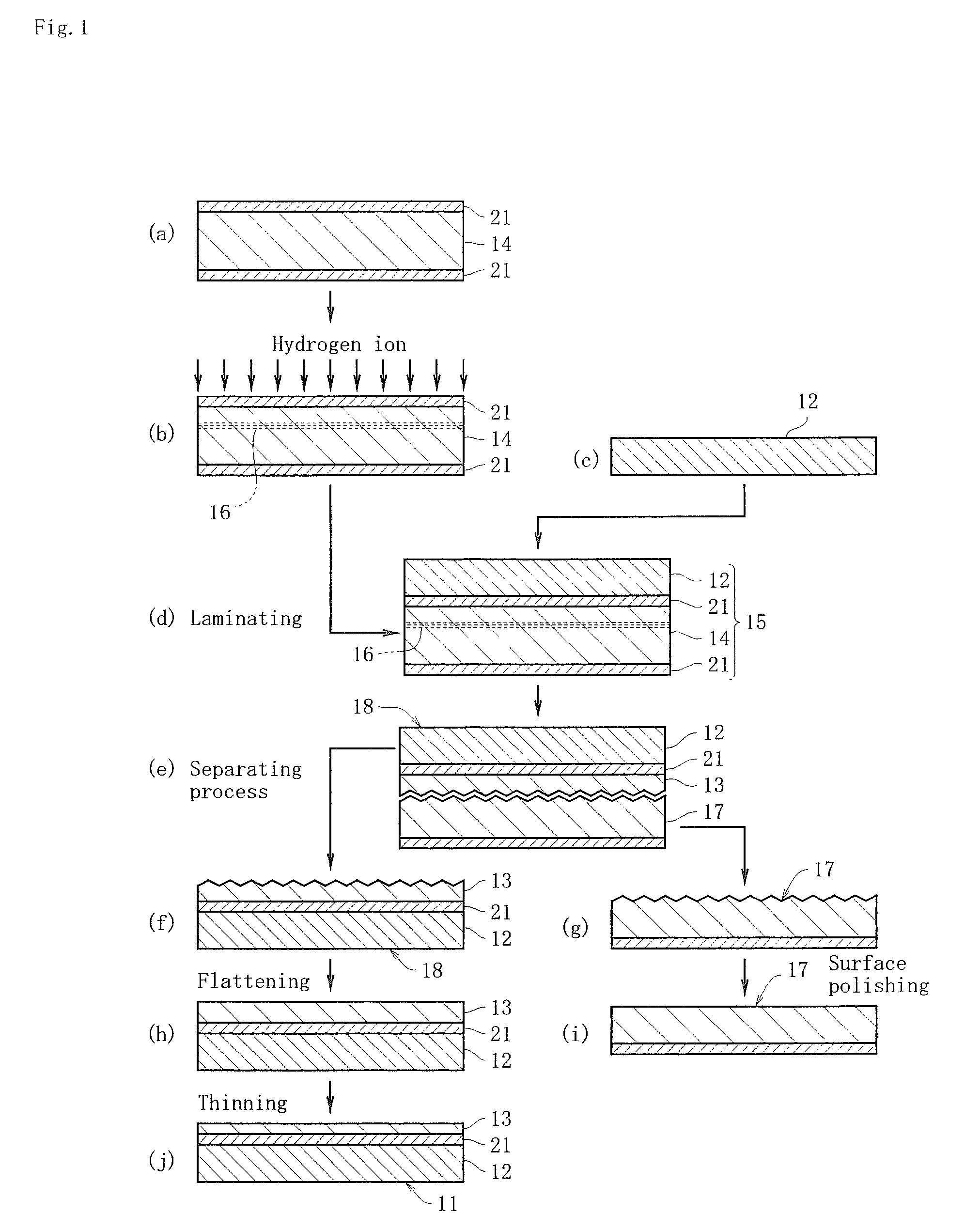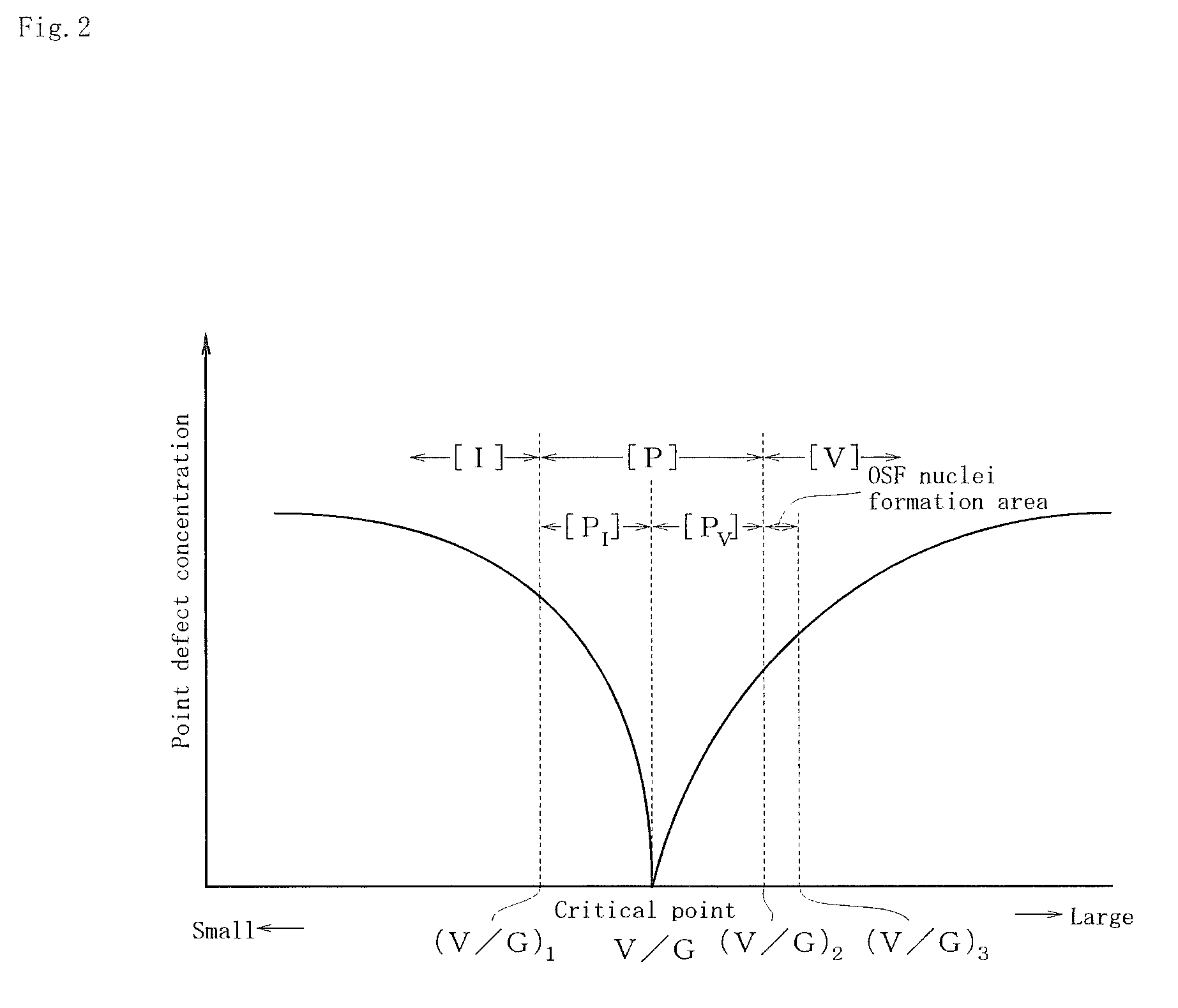Process for producing SOI substrate and process for regeneration of layer transferred wafer in the production
a technology of silicon on insulator and substrate, which is applied in the direction of crystal growth process, polycrystalline material growth, after-treatment details, etc., can solve the problems of increased leak current and the like of a manufactured device, wire disconnection, and failure to meet the requirements of the manufacturing process, so as to achieve the effect of reducing the substantial vacancy concentration, and reducing the generation probability of oxygen precipitates
- Summary
- Abstract
- Description
- Claims
- Application Information
AI Technical Summary
Benefits of technology
Problems solved by technology
Method used
Image
Examples
example 1
[0049]A boron (B) doped p-type silicon ingot of a diameter 8 inch was pulled up by the CZ method in an inorganic atmosphere including hydrogen by use of a silicon single crystal puller. Into the inside of the puller, argon gas was flown at the flow amount 40 litters / minute, from the moment of heating the raw material to the moment of cooling the raw material. After poly silicon of the raw material started melting, until the ingot was pulled up completely, hydrogen gas whose volume ratio to that of argon gas was 6% was mixed from the inlet port of argon gas and guided into the puller. With regard to the ingot pulled up, the resistance ratio is approximately 10 Ωcm, and the oxygen concentration is 5×1017 atoms / cm3. Two ingots were grown under the same conditions, while the V / G at the pulling moment was continuously decreased from 0.24 mm2 / minute·° C. to 0.18 mm2 / minute·° C. With regard to one ingot among the two ingots, the ingot center was cut in the pulling direction as shown in FIG...
example 2
[0053]With regard to the layer transferred wafer (FIG. 1(g)) obtained by performing the heat treatment onto the laminated body 15 and cutting the same at the ion implantation area 16 in Example 1, the separated surface from the SOI layer 13 was polished (FIG. 1(i)). The layer transferred wafer 17 where this separated surface was polished was used once again as a first silicon substrate 14, and by the same conditions and procedures as those in Example 1, an SOI substrate 11 was obtained again. This SOI substrate 11 obtained once again was made as Example 2.
example 3
[0054]With regard to the layer transferred wafer (FIG. 1(g)) obtained by performing the heat treatment onto the laminated body 15 and cutting the same at the ion implantation area 16 in Example 2, the separated surface from the SOI layer 13 was polished (FIG. 1(i)). The layer transferred wafer 17 where this separated surface was polished was used once again as a first silicon substrate 14, and by the same conditions and procedures as those in Example 1, a third SOI substrate 11 was obtained. This SOI substrate 11 obtained thirdly was made as Example 3.
PUM
| Property | Measurement | Unit |
|---|---|---|
| volume % | aaaaa | aaaaa |
| volume % | aaaaa | aaaaa |
| temperature | aaaaa | aaaaa |
Abstract
Description
Claims
Application Information
 Login to View More
Login to View More - R&D
- Intellectual Property
- Life Sciences
- Materials
- Tech Scout
- Unparalleled Data Quality
- Higher Quality Content
- 60% Fewer Hallucinations
Browse by: Latest US Patents, China's latest patents, Technical Efficacy Thesaurus, Application Domain, Technology Topic, Popular Technical Reports.
© 2025 PatSnap. All rights reserved.Legal|Privacy policy|Modern Slavery Act Transparency Statement|Sitemap|About US| Contact US: help@patsnap.com



